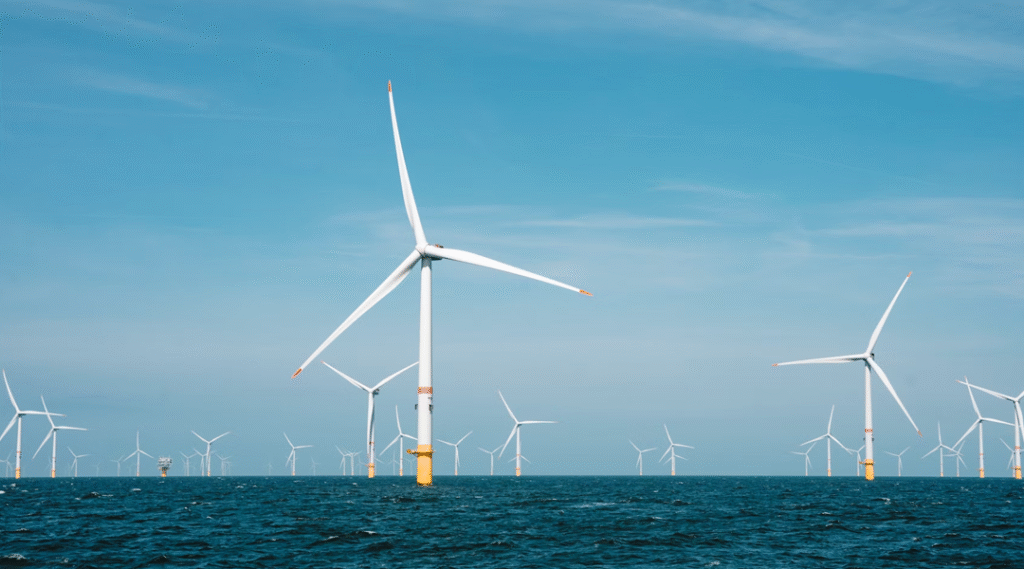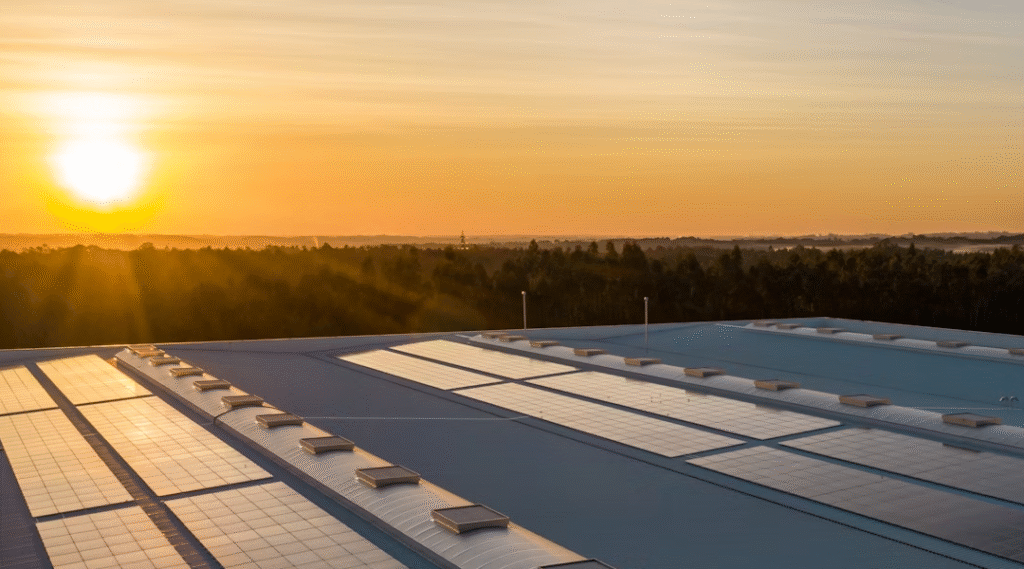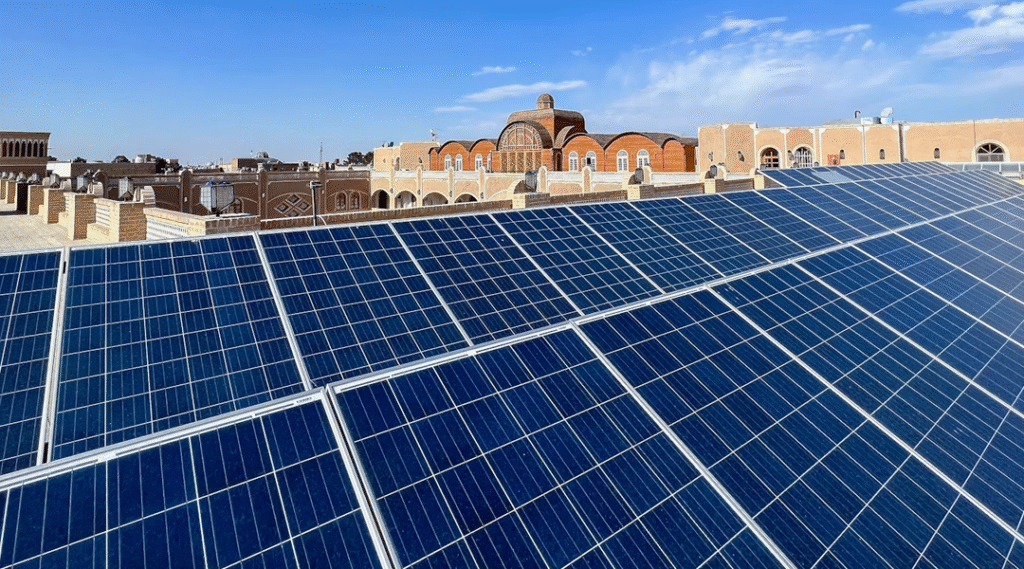Wind power has emerged as one of the fastest‑growing sources of renewable electricity worldwide. In just two decades, wind capacity has surged from under 20 GW in 2000 to more than 900 GW by mid‑2025, driven by technological advances, cost declines, and supportive policy frameworks. Yet as the global community races to decarbonize energy systems, wind developers and researchers are pushing beyond traditional onshore turbines, tackling new challenges offshore and exploring next‑generation concepts that promise even greater yields. This article examines the evolution of wind‑turbine design, the distinct characteristics of onshore versus offshore installations, the engineering innovations underpinning floating and repowered projects, and the road ahead for wind energy.
1. Evolution of Turbine Design
Early wind turbines in the 1980s and 1990s were small, often under 500 kW, with low hub heights and simple three‑bladed rotors. Since then, rotor diameters, hub heights, and generator capacities have grown dramatically. Today’s utility‑scale onshore turbines commonly exceed 3–4 MW, with rotor spans of 120–150 m and hub heights approaching 120 m. These size increases boost annual energy production by capturing steadier, higher‑speed winds at altitude and reducing the cost per kilowatt-hour. Advances in materials—such as carbon‑reinforced blades and cast steel hubs—and in computational aerodynamics have enabled these larger rotors while maintaining structural integrity under extreme loads.
Beyond size, modern turbines incorporate pitch and yaw control systems that adjust blade angles and nacelle orientation dynamically, optimizing capture and mitigating gusts. Innovations in drivetrain design—such as direct‑drive generators that eliminate gearboxes—have further improved reliability and lowered maintenance costs. Digital sensors embedded in blades, towers, and gearboxes feed into predictive‑maintenance algorithms, enabling operators to address wear before critical faults occur.
2. Onshore Challenges and Opportunities
Onshore wind remains the backbone of global wind deployment, thanks to relatively straightforward permitting, lower installation costs, and established supply chains. Typical capacity factors (the ratio of actual output to maximum possible) for onshore turbines range from 25 % in less windy regions to over 40 % in favorable locations.
However, siting onshore projects is increasingly constrained by land availability, environmental concerns, and local opposition. Turbine size also encounters diminishing returns: very tall towers require deeper foundations and more robust logistics to transport oversized blades and components by road. Moreover, as onshore sites proliferate into low‑wind territories, capacity factors drop and project economics weaken.
To address these issues, developers are targeting repowering of aging wind farms. By replacing dozens of small, 1 MW‑class turbines with a handful of 3–5 MW machines on existing pads, operators can double or triple energy yield while reducing the number of foundations, transformers, and maintenance visits. Repowering also streamlines permitting since the land is already zoned for wind, and environmental impacts are minimized.
3. Offshore Wind: Foundations & Transmission
Offshore wind offers a compelling proposition: higher and more consistent winds, vast unconstrained spaces, and proximity to coastal load centers. Since the first commercial offshore farm in 1991 off Denmark, capacity has risen to over 70 GW globally by 2025, led by Europe and rapidly expanding in Asia and the United States.
Engineering offshore installations introduces new complexities. Fixed‑bottom turbines—mounted on monopiles, jackets, or gravity bases—must withstand corrosive saltwater, dynamic wave and current forces, and the logistics of marine construction. Foundations often extend 20–30 m below seabed and can weigh thousands of tons. Installing them requires specialized vessels and careful seabed surveys to avoid pipelines or protected habitats.
Export cables that carry power to shore must traverse the seabed for tens of kilometers, demanding high‑voltage insulation, trenching or directional drilling, and robust armoring against fishing or anchoring gear. Offshore substations collect output from multiple turbines and step voltage up for long‑distance transmission to grid nodes.
4. Floating Turbines & Deep‑Water Potential
Deep‑water sites beyond 60 m depth—where fixed foundations are impractical—are opening up via floating platforms. Designs such as spar buoys, semi‑submersible barges, and triangular tension‑leg platforms are under demonstration or commercial deployment. Floating wind farms can access the stronger, more stable wind resources of open oceans, potentially boosting capacity factors above 50 %.
Pilot projects off Scotland, Japan, and the western U.S. have tested platforms for 6–10 MW turbines. Key challenges include anchoring systems that secure moorings without damaging the seabed, dynamic cable connections, and mitigating platform motions that could impair turbine performance. As floating technology scales, unit costs are expected to fall, unlocking vast new markets in regions like the Pacific Coast of North America, Mediterranean Basin, and Japan.
5. Repowering & Lifecycle Extension
Just as onshore wind farms are being repowered, similar concepts are emerging offshore. Older arrays with small 3–4 MW machines can be decommissioned or upgraded to 10+ MW turbines on improved foundations, tripling output per turbine and reducing the number of sea‑fasteners and maintenance points. Lifecycle extension through component retrofits (new blades, updated control systems) can squeeze additional years from existing assets while the broader sector develops next‑generation platforms.
Final Thoughts
Wind energy’s ascendancy reflects continuous innovation: turbines have grown bigger, more intelligent, and more efficient; offshore projects have leapt from shallow crests to deep‑water horizons; and repowering strategies maximize returns on earlier investments. Looking ahead, floating wind and hybrid renewables‑storage platforms promise still higher capacity factors and grid resilience. As the industry matures, striking the right balance among technology, economics, and environmental stewardship will be crucial—and wind will remain a cornerstone of the clean‑energy transition.
All articles for this special edition-Clean Energy:
(#1) The State of the Global Clean Energy Transition
(#2) Solar Power: Illuminating the Path from Rooftops to Utility-Scale Farms
(#3) Wind Energy: Onshore, Offshore & Beyond
(#4) Harnessing the Depths and Tides: A Deep Dive into Hydro, Marine & Geothermal Energy
(#5) Bioenergy & Waste‑to‑Energy: Turning Organic Residues into Renewable Power
(#6) Energy Storage & Grid Integration: Powering the Future of Clean Energy
(#7) Economics, Financing & Business Models in the Clean‑Energy Transition
(#8) Designing the Rules: Policy, Regulation, and Market Design in the Clean‑Energy Era
(#9) Environmental & Social Impacts of the Clean‑Energy Transition
(#10) Next‑Generation Clean‑Energy Innovations & the Road Ahead
As for in-depth insight articles about AI tech, please visit our AI Tech Category here.
As for in-depth insight articles about Auto Tech, please visit our Auto Tech Category here.
As for in-depth insight articles about Smart IoT, please visit our Smart IoT Category here.
As for in-depth insight articles about Energy, please visit our Energy Category here.
If you want to save time for high-quality reading, please visit our Editors’ Pick here.



